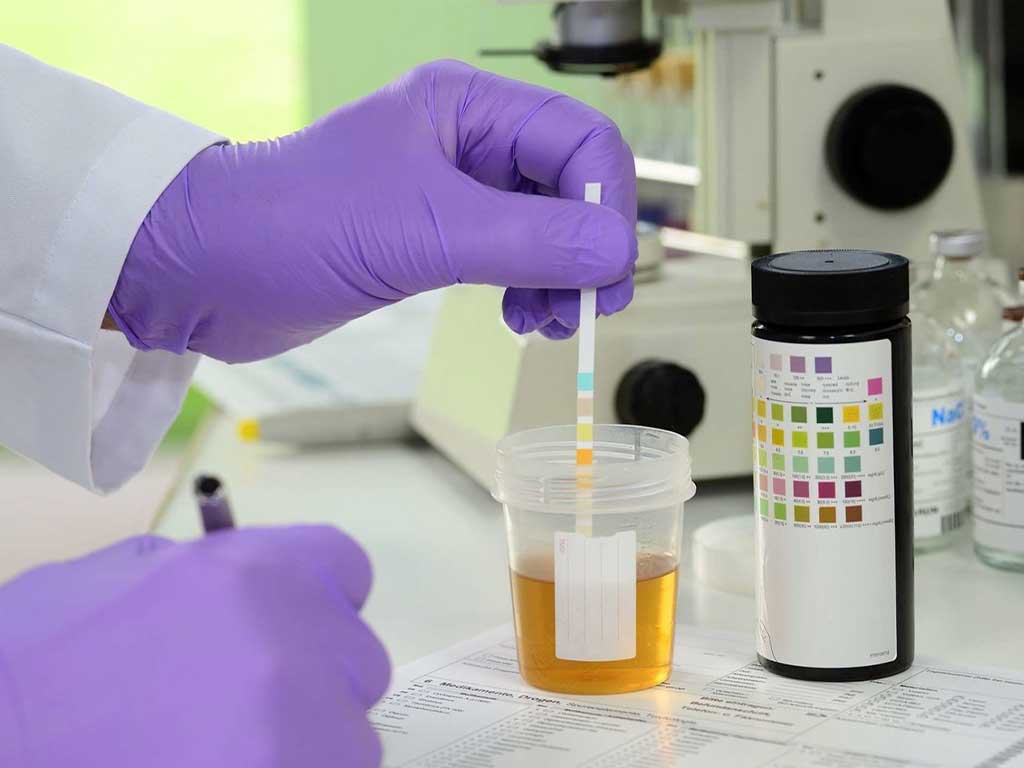EtG/EtS Alcohol Lab Test: Definition, How it Works, and Accuracy
20 October, 2023

Ethyl glucuronide (EtG) and ethyl sulphate (EtS) are metabolites produced by the liver after metabolising ethanol. An EtG/Ets alcohol lab test is one of the accurate methods for alcohol detection. It provides a detection window of up to 80 hours after the last alcohol intake. After collecting the urine samples, laboratory technicians analyse the samples using enzymatic assays, gas chromatography-mass spectrometry, or liquid chromatography-tandem mass spectrometry. It has accuracy rates of up to 70%.
There are many reasons for testing using urine tests. Many companies use EtG/EtS urine tests to maintain safety within the workplace. It is also effective in deterring alcohol overconsumption for employees. Moreover, these tests are also used in hospitals for treatment. Additionally, rehabilitation centres use these tests to check if the patient has relapsed. This article will present the definition, methods, and accuracy of EtG/EtS ethanol tests.
EtG/EtS Alcohol Lab Test: Definition
An EtG/ETS alcohol lab test is a method of detecting the alcohol consumption of an individual. There are generally three types of tests used when testing urine samples. These are ethanol, EtG, and EtS. Ethanol urine tests provide the shortest detection window of 12 hours. Meanwhile, EtG and EtS urine tests help detect alcohol consumption for up to 80 hours.
Ethyl glucuronide (EtG) and ethyl sulphate (EtS) are metabolite indicators of ethanol consumption. The liver produces these metabolites when it processes ethanol into different compounds. These metabolites stay in the body longer than alcohol, providing a bigger detection window. These are also detected during blood and hair tests. However, blood tests are limited to only within 24 hours after the last alcohol intake.
Workplaces often use EtG and EtS tests for further analysis of urine samples. This is because it is a non-invasive method of testing alcohol consumption. Furthermore, it shows signs of liquor abstinence due to its lengthier detection period.
Factors Affecting How Alcohol is Metabolised
Several factors affect how long alcohol stays in the body. Here are some of them:
- Age affects alcohol metabolism. Commonly, teenagers and elderly people process liquor more slowly.
- Lean body types eliminate ethanol more quickly compared to other body types.
- Higher alcohol tolerance may increase alcohol metabolism.
- Recent consumption of food can help metabolise ethanol faster.
- Kidney or liver problems result in a slower alcohol metabolic rate.
- Some people metabolise liquor faster at later times in the day.
- Exercise may help increase alcohol metabolic rate due to increased body temperature.
- Consumption of certain drugs or medications may decrease the alcohol elimination rate.

EtG/EtS Alcohol Lab Test: How It Works
Collecting samples for a urine test is simple and often done in clinics or hospitals. They are done for various reasons. EtG/EtS alcohol lab tests are examined using a variety of methods. Firstly, gas chromatography-mass spectrometry (GC-MS) heats the sample and utilises two techniques to analyse them. Gas chromatography uses a gas carrier to separate the compounds in the urine. Meanwhile, mass spectrometry classifies the ions based on their mass-to-charge ratio.
Secondly, liquid chromatography-tandem mass spectrometry (LC-MS-MS) is similar to GC-MS. However, it uses a liquid solvent to separate the compounds in the sample. Lastly, enzymatic assays identify enzymes and measure the amount of enzyme activities. Using these laboratory methods, lab technicians determine the consumption of ethanol.
These laboratory tests typically take four days to a few weeks to produce results. A high positive result indicates heavy alcohol intake from the previous to the testing day. Meanwhile, low positive results suggest light liquor consumption during the past 24 hours. It may also mean heavy drinking two to three days before the test.
Reasons for Testing
There are several reasons for testing, depending on the circumstances. For workplaces, it ensures the safety of all employees. This is vital in high-risk industries like mining and construction because accidents may harm many people. This is why testing is a requirement during pre-employment for some jobs.
Additionally, medical professionals screen patients undergoing rehabilitation for AUD. This is to detect possible relapse. They also test individuals who are undergoing treatment for different conditions. Moreover, law enforcement screens drivers to identify people engaging in intoxicated driving. Laboratory results are often used in legal proceedings as evidence of fault.

EtG/EtS Alcohol Lab Test: Accuracy
EtG/EtS alcohol lab tests are generally accurate. They have an accuracy rate of 70% or more for those who recently consumed liquor. Additionally, its accuracy rates are higher for people who regularly drink alcohol. EtG/EtS tests are the most accurate within 24 hours after the last alcohol intake. However, there are still risks of false positive and negative results.
False-negative results often occur after the 24-hour detection window. This is possible if the individual only consumes small amounts of alcohol. Meanwhile, false-positive results may happen due to many factors. Firstly, some people with diabetes or urinary tract infections may produce a positive result. Secondly, consumption of food that contains alcohol, such as vanilla extract and balsamic vinegar. Thirdly, exposure to items with trace amounts of alcohol, like mouthwash and antiperspirants.
Lastly, certain medications like antibiotics may also affect the results. Companies need to have a reliable testing service. This is because improper handling of samples may also produce erroneous results. Some may also benefit from implementing other testing methods like breath and saliva tests.
Benefits of Owning a Personal Breathalyser
There are many benefits to owning a personal breathalyser. Firstly, it helps people monitor and limit their alcohol consumption. It is vital to avoid overconsumption of alcohol due to its adverse effects. At low BAC levels, people may feel slight euphoria and increased confidence. However, at high levels, it can result in coma or death.
Moreover, it provides an objective assessment of their sobriety. This prevents them from participating in dangerous behaviours like drink driving. Being caught for Driving Under the Influence (DUI) has many consequences. It can range from fees to jail time, depending on the case.
Conclusion
EtG/EtS alcohol lab tests provide reliable results due to using advanced lab techniques. This is why they are done to confirm preliminary non-negative results from rapid tests. However, there are still significant risks of false positive and negative results. Thus, the test needs to be provided by a reliable service. Moreover, companies may use other testing methods like blood and breath tests as alternative methods.
By using diverse testing methods, companies can be more assured about the results of screenings. This is vital for high-risk industries that enforce zero-tolerance alcohol policies. It is ideal to use testing methods whose results are unaffected by environmental factors. Blood tests provide the most accurate results for substance use screening. However, they are invasive and costly procedures. Workplaces may also use BACtrack breathalysers for quick and reliable measurements of Blood Alcohol Concentration (BAC) levels.






























